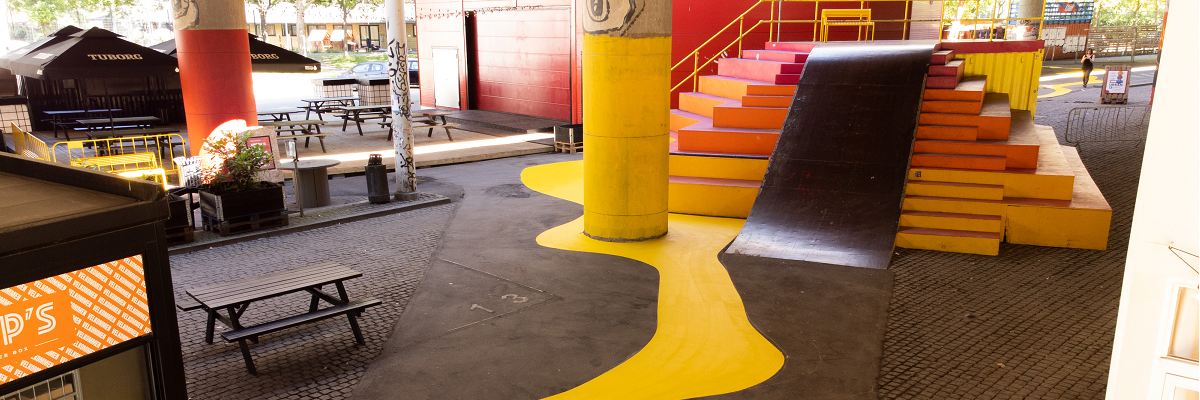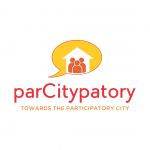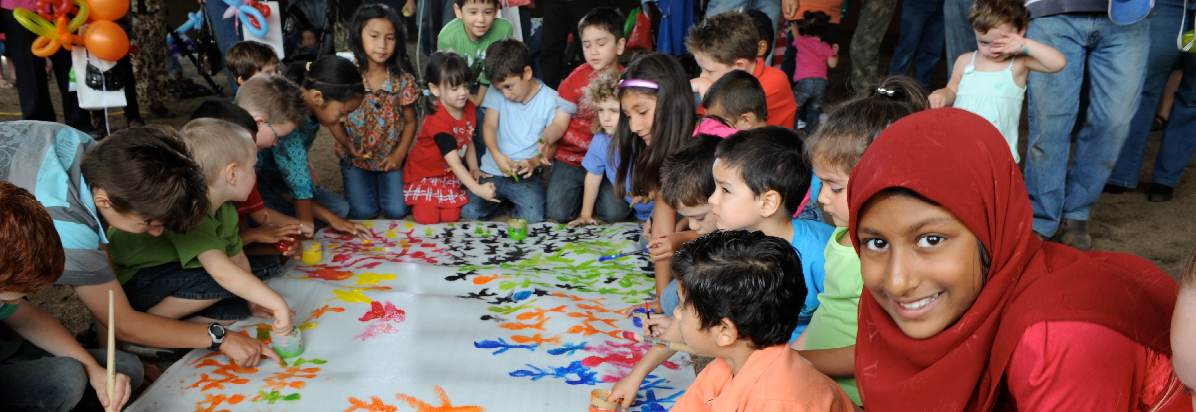As we arrive in Iztapalapa, the earthquake alarm is sounding and everyone rushes to the street. It was ‘only’ a 6-point-something shake, which we could not even perceive in Mexico City. But this experience illustrates what we came to see: How alarm systems for natural disasters work and how people react to them.
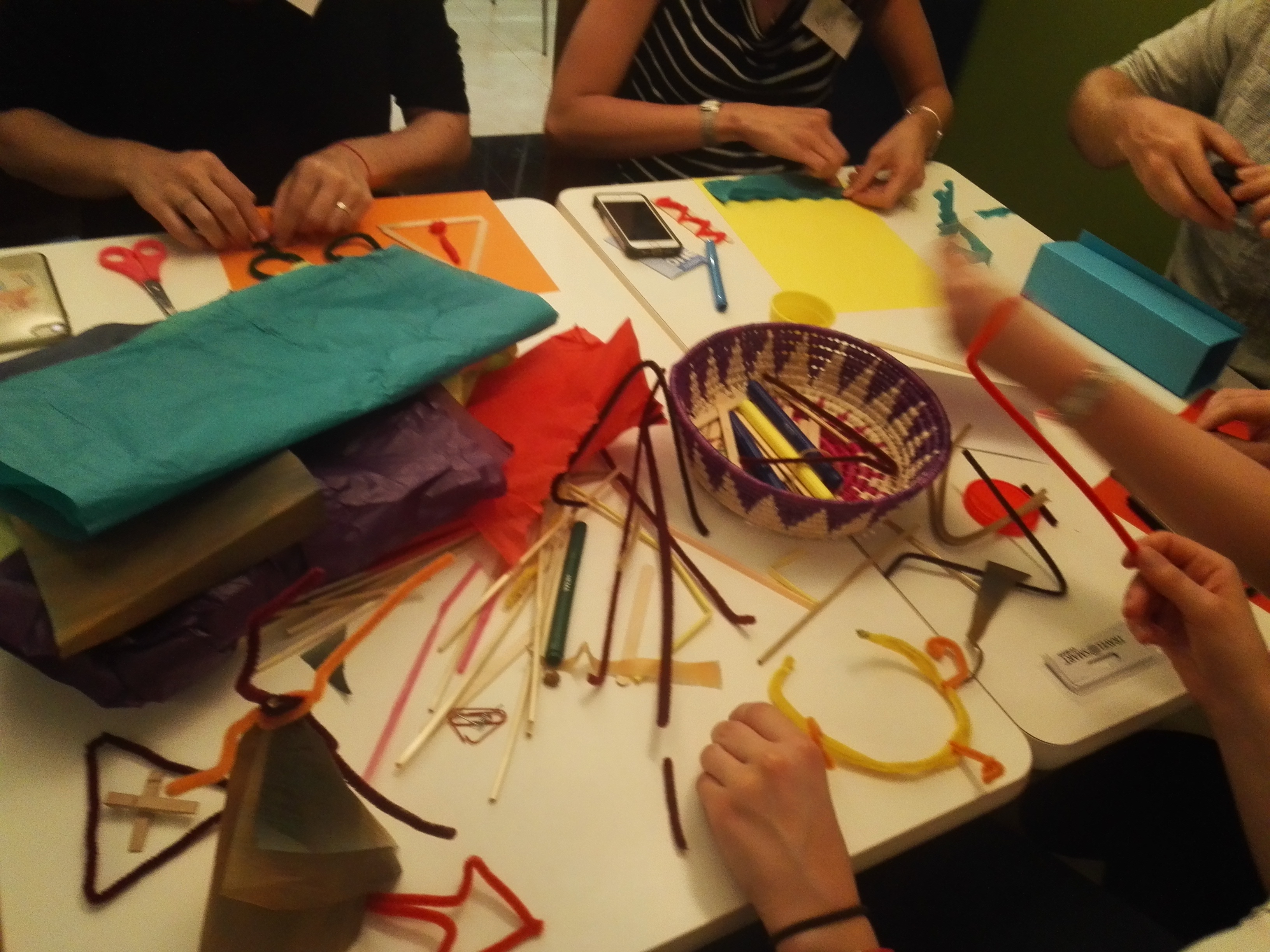
Mexico City as a perfect venue for the Understanding Risk Conference
In May 2018, I was part of the UR2018 Understanding Risk Conference in Mexico City. Together with other young researchers from different disciplines, I participated in a one-day event called a Pressure Cooker. During this challenge, we worked on the case study of Iztapalapa and developed a risk communication strategy for natural hazards such as floods, subsidence and cracks in the ground. How do you tell people about these geological phenomena and how do you educate them so they can respond adequately?
These questions are especially important in Mexico, which is vulnerable to all natural hazards you can think of, from earthquakes to inundations to technological, chemical, organisational and sanitary disasters. Many of them are interconnected. After the big earthquake in 1985, which claimed the life of at least 5,000 people, Mexico’s comprehensive disaster risk management became much better. Nowadays, resilience is a priority and some of the success of this strategic change could be seen in September 2017. On the same day as 32 years ago, another horrible earthquake shook the city twice in a day. However, less buildings collapsed and the number of casualties was much lower than in 1985. People knew the drill and acted calmly and quickly.
These experiences made Mexico a very fitting venue for the UR 2018 conference. Other countries can learn from Mexico. What impressed me most was to see how sophisticated the early warning systems for earthquakes and floods are in the district of Iztapalapa.

Disaster Communication in Iztapalapa
Iztapalapa in Mexico City’s South-East is the most populated district of the megalopolis. About 1.8 million people live here, most of them in sub-standard conditions. At the same time, natural disasters hit the area harder than others due to the poor soil quality in Iztapalapa. In most cities, the people would be more or less left to their fate, but Mexico City decided to develop the best warning systems in one of its poorest districts.

During the case study work, our international and interdisciplinary group thought that it would be good to involve local residents of Iztapalapa more in disaster communication by making them ‘ambassadors’ of strategies for quick and safe reaction. We also came up with the idea to use street art to draw more attention to the danger of disasters like cracks in the ground, which at first sight might not seem life-threatening (although they actually can be).
Arriving in Iztapalapa, we quickly saw that the locals are already a few steps ahead. They not only use street art festivals to tighten community bonds and improve their neighbourhood, they also have youth brigades, neighbourhood volunteers and a mobile class room that educates the people of Iztapalapa in a fun and entertaining, yet informative way on a daily basis and for free.
The Mobile Class Room
This includes games to enhance capacity-building. By helping people to understand causes and consequences of risks, it is easier to improve their understanding and implementation of protection measures. First aid courses, fire fighting strategies and evacuation drills are also part of the awareness building done by the civil protection service. Various simulation games teach everyone how the different alarms sound and in a role play simulation, neighbours pretend to be local authorities in order to decide danger levels.
So far, 20,000 people of Iztapalapa have been trained in the course of 3 years. The mobile class room keeps moving in the district and parks anywhere in a community. Classes are for up to 35 people at once.
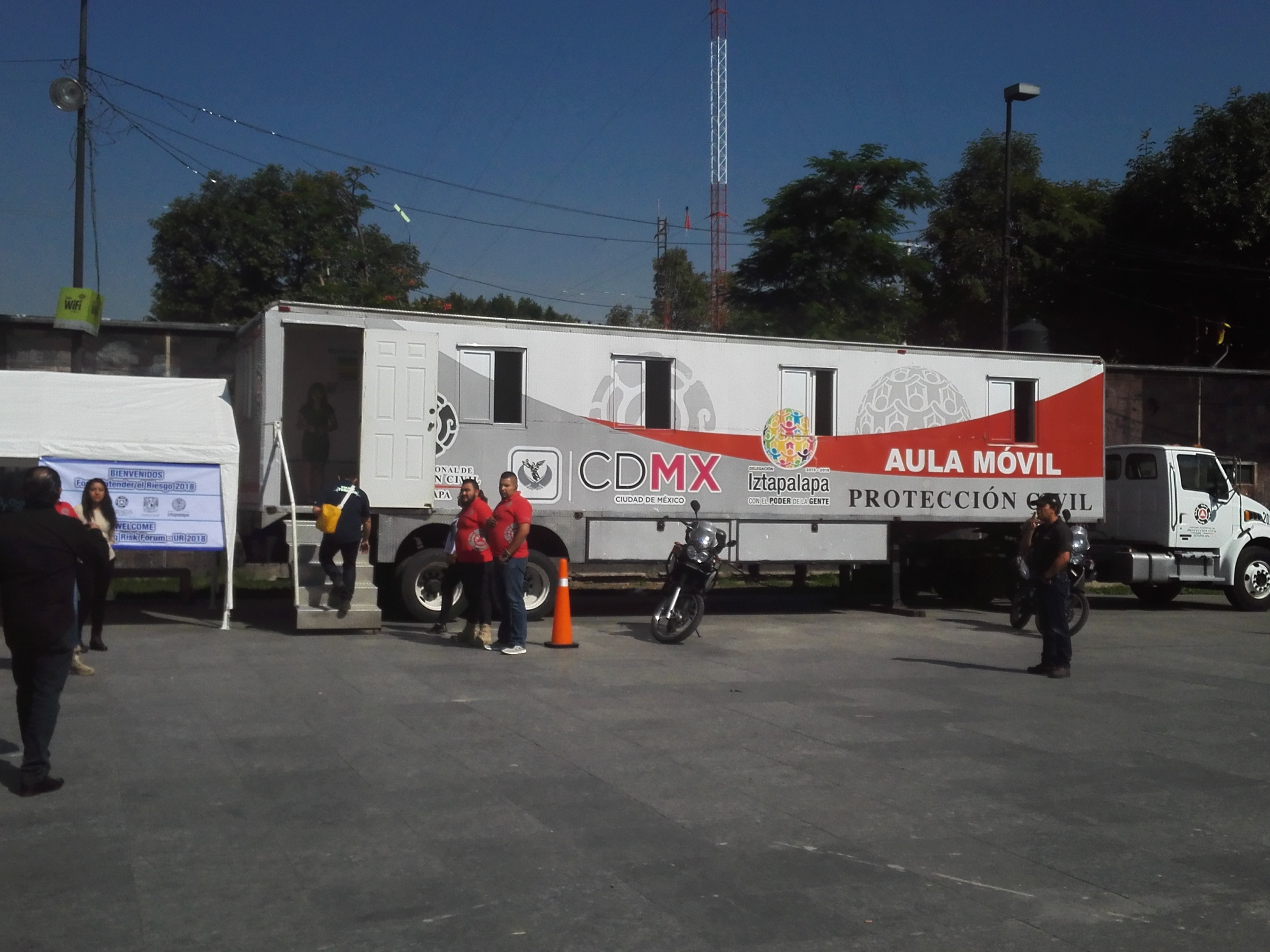
The communication centre, which is run by police officers and scientists alike, features not only screens and a research lab, they also make use of the local communication channels such as WhatsApp. There are large WhatsApp groups for all of Iztapalapa and often, these are the quickest way of learning about an impeding flood due to heavy rains.
Flood preparedness with flood gates
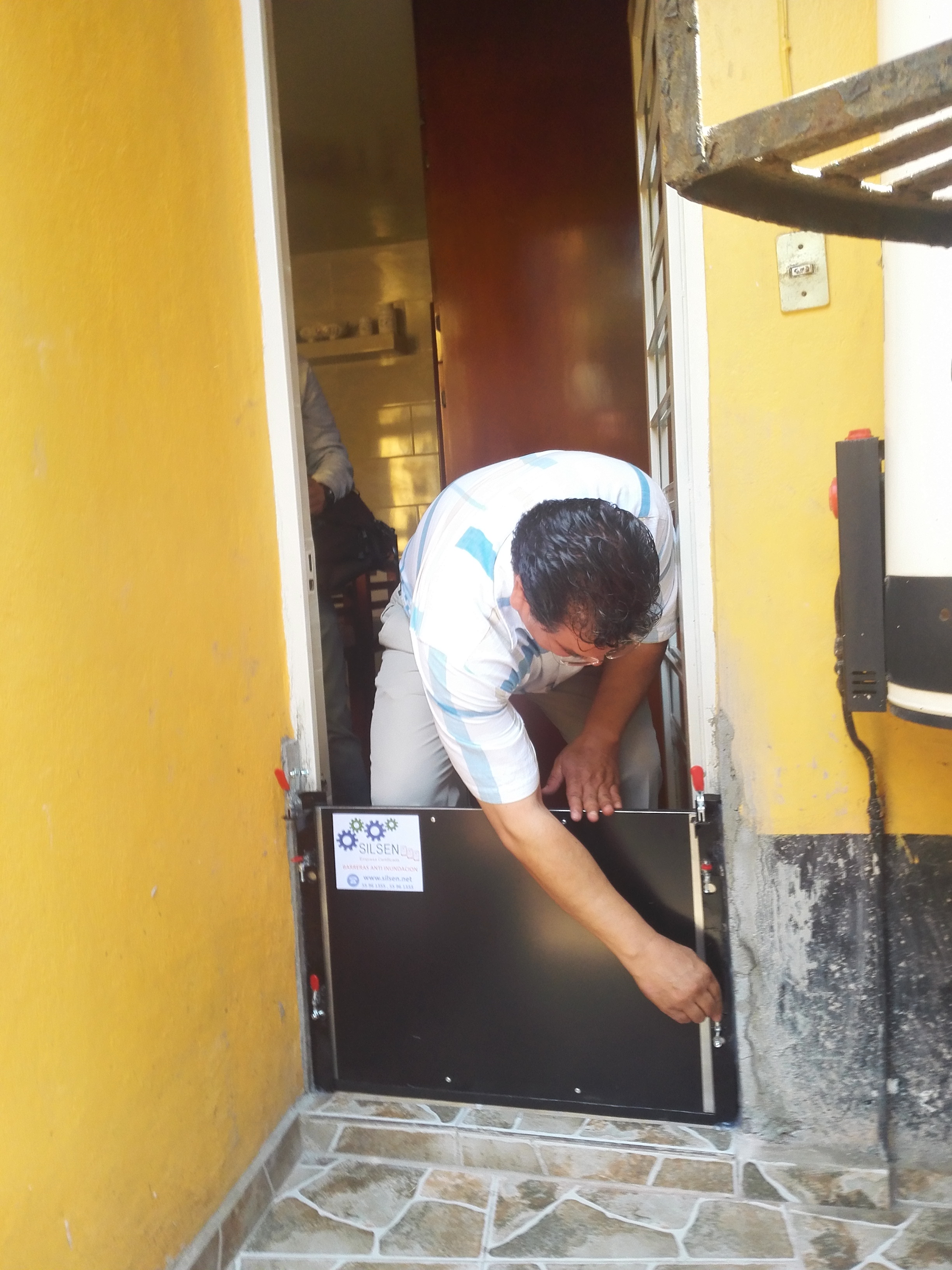
One local resident, Margarita, kindly opened her door to our group and showed us the newest innovation that will help countless people in Iztapalapa to protect themselves and their properties from flood. Because there are many depressions and vulnerable infrastructure elements in the streets of Iztapalapa, heavy rains (which occur almost daily in the rainy season) almost inevitably result in floods that can damage cars, floors and furniture. Between 5 and 20 cm of water threaten houses like Margarita’s most of the times it rains. The solution: Flood gates. They are 50 cm high and can be installed in a door within a minute. They weigh about 3 kilograms each so that even a child can handle them. To equip a whole house you have to calculate about 300 USD, which is a lot of money for Iztapalapa’s residents. However, there will be subsidies and donations in high-risk areas for floods in the coming months.
Apart from these gates, Margarita also has one of 120 alarm systems for floods installed in her house. The loudspeakers on the roof let about 150 houses in her vicinity know if a flood is coming. They then have about an hour to prepare.
Citizen engagement for disaster communication and preparedness
In the last years, a successful engagement process has been taking place in Iztapalapa. Where there was little interest, no participation and no trust in authorities, there are now efficient warning systems, neighbourhood leaders, youth brigades and helpful communication channels that warn you of disasters. In addition, the mobile class room has supported pride in the community and fostered open communication and joint identification of hazards. This also means that risk communication and disaster preparedness have entered urban planning. Community actions and participatory methods are employed to engage large parts of the Iztapalapa neighbourhoods. This is why everyone know exactly what to know when the earthquake alarm hit that day and it is also why flood damages have been going down.
There is still a lot to improve in Iztapalapa, starting with drainage infrastructure and even more educational offers, but it is a very good start. Other countries and cities should learn from Iztapalapa’s example.
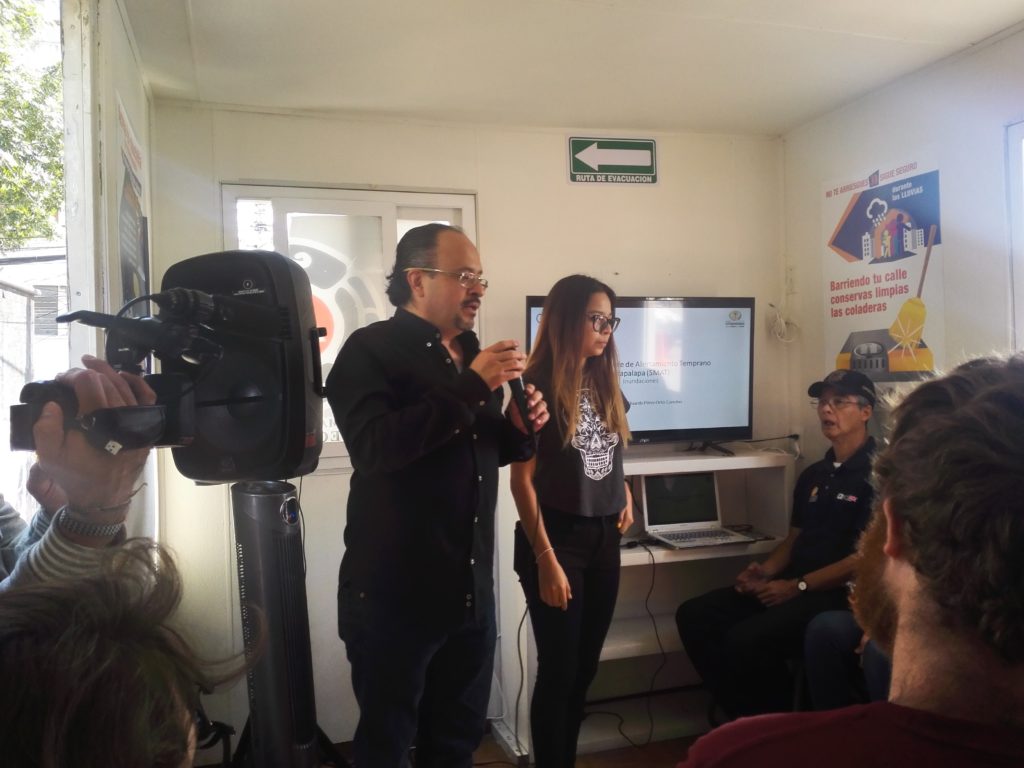
A big thank you to the Water Youth Network, UR 2018, the iidear NGO (especially Enrique Guevara), Daisy from the mobile truck and the Delegación de Iztapalalpa for making this experience possible!
Please share your thoughts and ideas in the comment section below and don’t hesitate to contact me (laura@parcitypatory.org).



